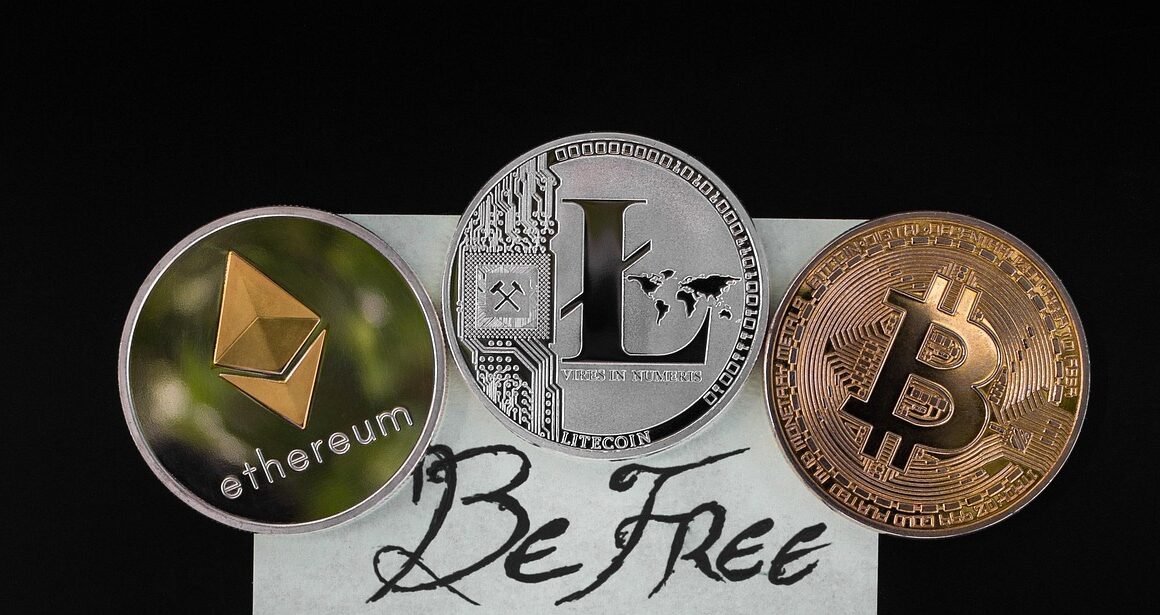Cryptocurrency, digital gold, decentralized finance – these terms have exploded into mainstream conversation, yet navigating the world of crypto assets can still feel like deciphering a complex code. Whether you’re a seasoned investor or a curious newcomer, understanding the fundamentals of crypto assets is crucial. This comprehensive guide breaks down the key aspects of this revolutionary technology, offering a clear and actionable path to informed participation.
What are Crypto Assets?
Defining Crypto Assets
Crypto assets are digital representations of value or contractual rights that rely on cryptography for security and are recorded on a distributed ledger, typically a blockchain. Unlike traditional assets issued by central authorities, crypto assets are often decentralized, meaning no single entity controls them. This decentralization is a key appeal for many investors.
- Key Characteristics:
Decentralized: Operated and validated by a distributed network.
Cryptographically Secured: Uses advanced encryption techniques to secure transactions and control the creation of new units.
Transparent (Usually): Transaction history is often publicly viewable on the blockchain.
Borderless: Transactions can occur across national borders without traditional banking intermediaries.
Programmable: Allows for the creation of smart contracts, which automate agreements.
Types of Crypto Assets
The crypto asset landscape is diverse, with various types serving different purposes. Understanding these categories is essential for making informed investment decisions.
- Cryptocurrencies: Designed to function as a medium of exchange, like Bitcoin (BTC) and Ethereum (ETH).
Example: Bitcoin aims to be a decentralized digital currency, offering a peer-to-peer electronic cash system.
- Stablecoins: Pegged to a stable asset, such as the US dollar, to minimize price volatility.
Example: Tether (USDT) and USD Coin (USDC) are designed to maintain a 1:1 value with the US dollar, providing a stable entry and exit point for crypto markets.
- Security Tokens: Represent ownership in a traditional asset, such as equity or debt.
Example: tZERO is a platform focused on trading security tokens representing equity in various companies.
- Utility Tokens: Grant access to a specific product or service within a blockchain ecosystem.
Example: Basic Attention Token (BAT) is used within the Brave browser ecosystem to reward users for viewing ads.
- Non-Fungible Tokens (NFTs): Unique digital assets representing ownership of items, such as art, collectibles, or real estate.
Example: CryptoPunks are a collection of 10,000 uniquely generated characters, serving as early examples of NFTs and digital collectibles.
Understanding Blockchain Technology
The Foundation of Crypto Assets
Blockchain technology is the backbone of most crypto assets. It’s a distributed, immutable ledger that records transactions across a network of computers. This transparency and security are central to the value proposition of crypto.
- Key Concepts:
Blocks: Groups of transactions bundled together.
Chain: A sequence of blocks linked together cryptographically.
Cryptography: Used to secure transactions and verify their authenticity.
Consensus Mechanisms: Algorithms that ensure agreement on the state of the blockchain (e.g., Proof-of-Work, Proof-of-Stake).
Decentralization: No single entity controls the blockchain.
How Blockchain Works in Practice
Imagine a shared Google Sheet that everyone in a network has access to. Every transaction (like sending money) is recorded as a new entry in the sheet (a block). Once a block is filled, it’s added to the chain, making it permanent and verifiable by all participants. This process eliminates the need for a central authority to validate transactions, reducing the risk of censorship and single points of failure.
- Example: Bitcoin Mining: Bitcoin uses a Proof-of-Work consensus mechanism, where miners compete to solve complex mathematical problems to add new blocks to the blockchain. Miners are rewarded with newly minted Bitcoin for their efforts.
Investing in Crypto Assets: Risks and Rewards
Potential Benefits of Crypto Assets
Investing in crypto assets can offer several potential advantages, but it’s crucial to understand the risks involved.
- Potential High Returns: Crypto markets have seen significant price appreciation in the past.
- Diversification: Crypto assets can offer diversification from traditional asset classes.
- Decentralization: Offers an alternative to traditional financial systems controlled by central authorities.
- Innovation: Access to new and innovative technologies.
- Accessibility: Allows for greater financial inclusion, particularly in regions with limited access to traditional banking services.
Risks to Consider
The crypto market is known for its volatility and regulatory uncertainty. Thorough research and risk management are essential.
- Volatility: Crypto asset prices can fluctuate dramatically in short periods.
- Regulatory Uncertainty: The regulatory landscape for crypto assets is still evolving.
- Security Risks: Crypto exchanges and wallets can be vulnerable to hacking and theft.
- Complexity: Understanding the technical aspects of crypto assets can be challenging.
- Scams and Fraud: The crypto space attracts scams and fraudulent projects.
- Practical Tip: Never invest more than you can afford to lose. Always conduct thorough research (DYOR – Do Your Own Research) before investing in any crypto asset.
How to Get Started with Crypto Assets
Choosing a Crypto Exchange
Selecting a reputable and secure crypto exchange is the first step in getting started.
- Factors to Consider:
Security: Look for exchanges with robust security measures, such as two-factor authentication and cold storage of funds.
Fees: Compare transaction fees and withdrawal fees across different exchanges.
Supported Assets: Ensure the exchange offers the crypto assets you are interested in.
Liquidity: Higher liquidity means easier and faster trading.
User Interface: Choose an exchange with a user-friendly interface, especially if you are a beginner.
- Examples of Popular Exchanges: Coinbase, Binance, Kraken, Gemini.
Securing Your Crypto Assets
Protecting your crypto assets from theft is paramount.
- Best Practices:
Use Strong Passwords: Create unique and complex passwords for your exchange accounts and wallets.
Enable Two-Factor Authentication (2FA): Add an extra layer of security to your accounts.
Use Hardware Wallets: Store your crypto assets offline in a hardware wallet for maximum security.
Example: Ledger and Trezor are popular hardware wallet options.
Be Wary of Phishing Scams: Never click on suspicious links or share your private keys with anyone.
Understanding Crypto Wallets
Crypto wallets are used to store, send, and receive crypto assets.
- Types of Wallets:
Software Wallets (Hot Wallets): Apps or programs installed on your computer or mobile device.
Example: MetaMask, Trust Wallet. Convenient but less secure than hardware wallets.
Hardware Wallets (Cold Wallets): Physical devices that store your private keys offline.
Exchange Wallets: Wallets provided by crypto exchanges. Convenient for trading, but less secure for long-term storage.
Conclusion
The world of crypto assets offers exciting opportunities and potential rewards, but it also comes with significant risks. By understanding the underlying technology, the different types of crypto assets, and the importance of security, you can navigate this evolving landscape with greater confidence. Remember to always conduct thorough research, manage your risk effectively, and stay informed about the latest developments in the crypto space. Crypto assets are not a “get-rich-quick” scheme, but rather a potentially transformative technology that requires careful consideration and informed decision-making.



